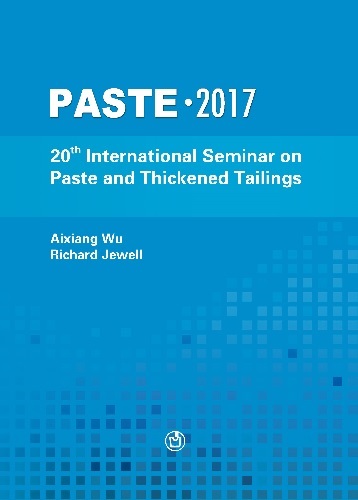Surface tailings disposal at the Żelazny Most TSF, today and into the future

|
Authors: Stefanek, P; Engels, J; Wrzosek, K; Sobiesak, P; Zalewski, M |
DOI https://doi.org/10.36487/ACG_rep/1752_24_Stejanek
Cite As:
Stefanek, P, Engels, J, Wrzosek, K, Sobiesak, P & Zalewski, M 2017, 'Surface tailings disposal at the Żelazny Most TSF, today and into the future', in A Wu & R Jewell (eds), Paste 2017: Proceedings of the 20th International Seminar on Paste and Thickened Tailings, University of Science and Technology Beijing, Beijing, pp. 213-225, https://doi.org/10.36487/ACG_rep/1752_24_Stejanek
Abstract:
The Żelazny Most Tailings Storage Facility (TSF) is currently the sole site for the deposition of tailings generated from the flotation process of copper ore, which is extracted by KGHM Polska Miedź. The Żelazny Most TSF was commissioned in 1977. At the present time, the Tailings Storage Facility (TSF) occupies an area of 1638 ha having an embankment perimeter of 14.3 km, making it one of the largest tailings facilities in Europe. The current height of the embankments range from 40 to 71.5 m (maximum crest elevation is 182.5 m asl) and approximately 600 million m3 of tailings have already been deposited within the facility to date. Currently, the Żelazny Most TSF is being raised up to an elevation of 195 m asl. As a result, it will be capable of storing 770 million m3 of tailings by 2037. Since 2008, KGHM has been preparing conceptual studies of future tailings storage methodology to ensure deposition until 2042 (1 billion m3). With having a focus on safety and the environment, it was concluded that the future development of the Żelazny Most TSF will be carried out by constructing the Southern Extension (609 ha) adjoining the Main Structure to the south. DHV Hydroprojekt and KGHM have performed several studies focused on the construction methodology of the embankments for the new Southern Extension. The conclusion of these studies is to convert the tailings disposal from unthickened upstream spigotting construction, to thickened tailings deposition. Under this scenario, part of tailings would by segregated by means of hydrocyclones, allowing the coarse fraction to be used for downstream embankment construction and the fine fraction thickened and deposited in the central section of the Southern Extension. This paper presents the development of the Żelazny Most TSF facility to date and the options studied as part of the Southern Extension development and migration to thickened tailings storage.
References:
Nicholson, D., Tse, C. and Penny, C. 1999, ‘The Observational Method in ground engineering – principles and applications’, Report 185, CIRIA, London.
Terzaghi, K., and Peck, R.B. 1967, ‘Soil Mechanics in Engineering Practice’, John Wiley and Sons, 729p.
© Copyright 2026, Australian Centre for Geomechanics (ACG), The University of Western Australia. All rights reserved.
View copyright/legal information
Please direct any queries or error reports to repository-acg@uwa.edu.au
View copyright/legal information
Please direct any queries or error reports to repository-acg@uwa.edu.au